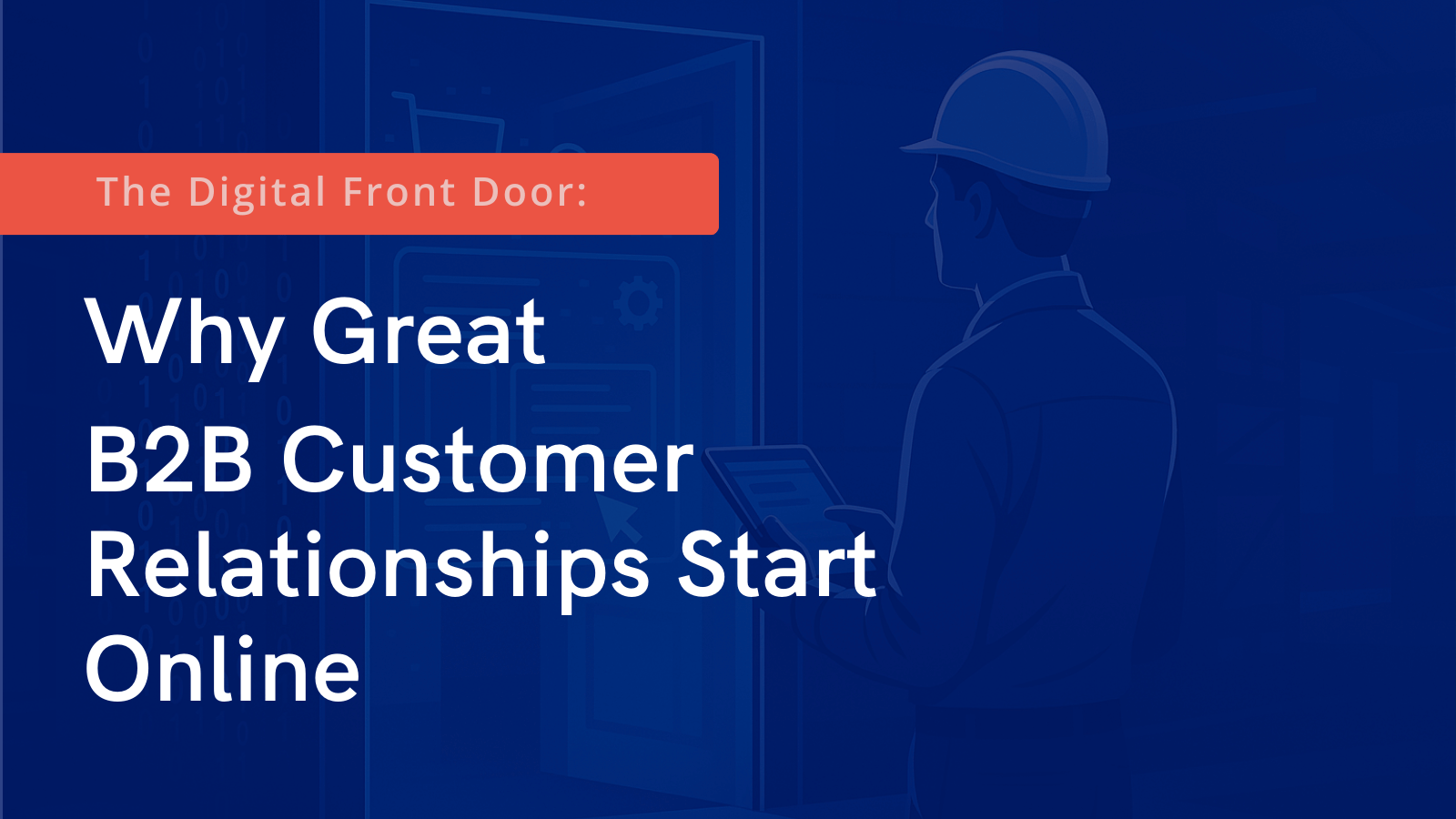The Financial and Operational Impact
Digital Is Not Just About Experience. It’s About Profit.
There’s a myth in the industry that digital transformation is just about customer experience—about having a modern-looking site or a slick user interface.
Let’s cut through that.
Digital isn’t just a CX play. It’s a financial and operational growth lever.
For manufacturers and distributors, digital done right improves cash flow, increases margin, reduces friction, and makes your business easier to scale.
This isn’t theoretical. It’s measurable.
Here’s how it works.
1. Cost to Serve: The Hidden Margin Drain
Every time your team touches a simple, repeatable order manually, you’re leaking profit.
- A rep re-keys a PO.
- A CSR calls to confirm pricing.
- A warehouse picks an item that was already out of stock.
All of that adds cost. Slows things down. And introduces risk.
But when customers can self-serve online?
- You eliminate overhead tied to manual entry.
- You reduce errors.
- You cut down on time and labor spent fixing avoidable issues.
The most profitable orders are the ones that don’t require a person.
Digital doesn’t just modernize your order flow.
It reduces your cost to serve, at scale.
2. Quote-to-Cash: Faster In, Faster Out
Slow quoting and manual payment workflows kill cash flow. They also frustrate your customers.
Digital helps you accelerate every step:
- Real-time quoting
- Automated invoicing
- Online payment and credit
- Reduced disputes, faster reconciliation
Revenue doesn’t matter until it’s collected.
eCommerce shortens the cycle and tightens financial controls, so you get paid faster, with fewer surprises.
3. Retention > Acquisition
It’s tempting to view eCommerce as a new customer engine.
But the real value often shows up in customer retention.
When your platform:
- Remembers preferences
- Speeds up reordering
- Provides order status and inventory visibility
- Works seamlessly 24/7
You make your customer’s job easier. And when that happens?
They stay.
Every frictionless interaction becomes a reason not to leave.
That’s how loyalty is built, one self-service feature at a time.
4. Inventory Visibility + Dynamic Pricing = Real-Time Commerce
Digital maturity isn’t just about your website.
It’s about system integration.
When your ERP, pricing, and product systems connect to your eCommerce platform, you unlock:
- Real-time inventory visibility
- Branch-level stock info
- Accurate, personalized pricing
- Fewer backorders
- Fewer “Do you have this?” calls
And your internal teams benefit too:
- Sales doesn’t quote what you don’t have.
- Service doesn’t chase down availability.
- Pricing becomes strategic, not reactive.
That’s not just a better experience. It’s a smarter business model.
5. Track What Matters
You don’t need 50 dashboards to prove impact.
Start with a few KPIs that cut straight to performance:
- Digital revenue share – Is your online channel growing?
- AOV – Are digital customers spending more?
- Conversion rate – Are you turning visitors into buyers?
- Churn rate – Are you holding on to more customers with better tools?
These are the metrics your executive team should be tracking quarterly.
They tell you whether digital is actually driving revenue, reducing cost, and building resilience.
The Bottom Line: Digital = Profitability
This isn’t about a fancy interface.
It’s about:
- Lower cost to serve
- Faster revenue collection
- Stronger customer loyalty
- Accurate, dynamic data
- Smarter pricing and quoting
Digital transformation isn’t the digital team’s job. It’s how your entire company will operate in the next decade.
If you’re still treating eCommerce as a bolt-on feature, you’re not just underdelivering on customer expectations, you’re leaving margin, cash flow, and competitive advantage on the table.
Let’s fix that.









